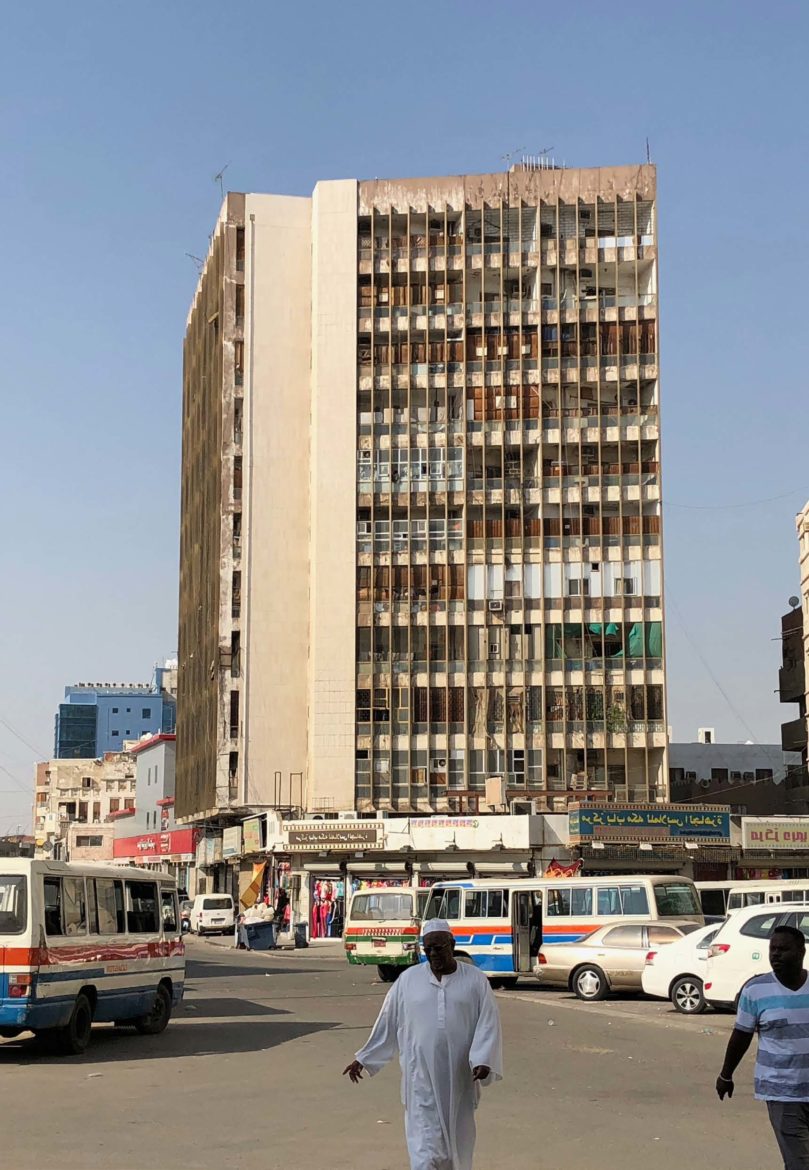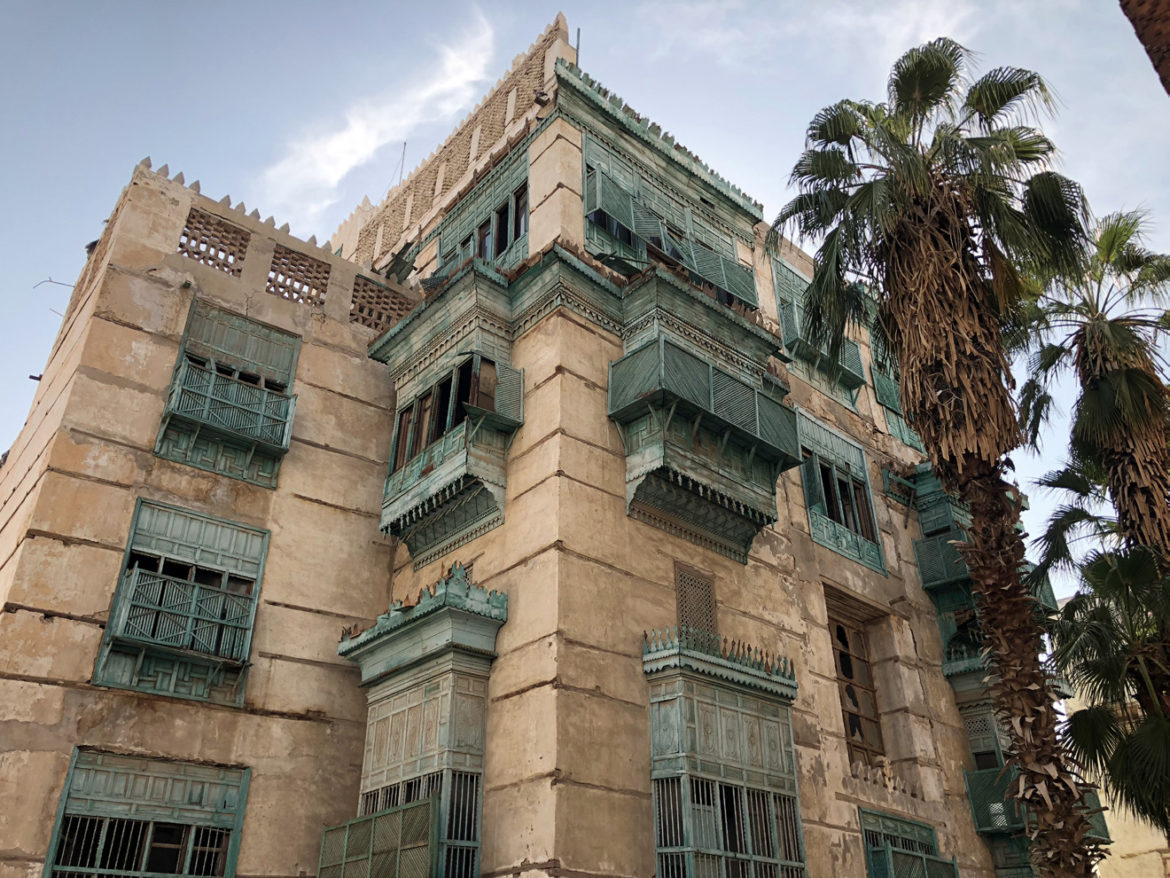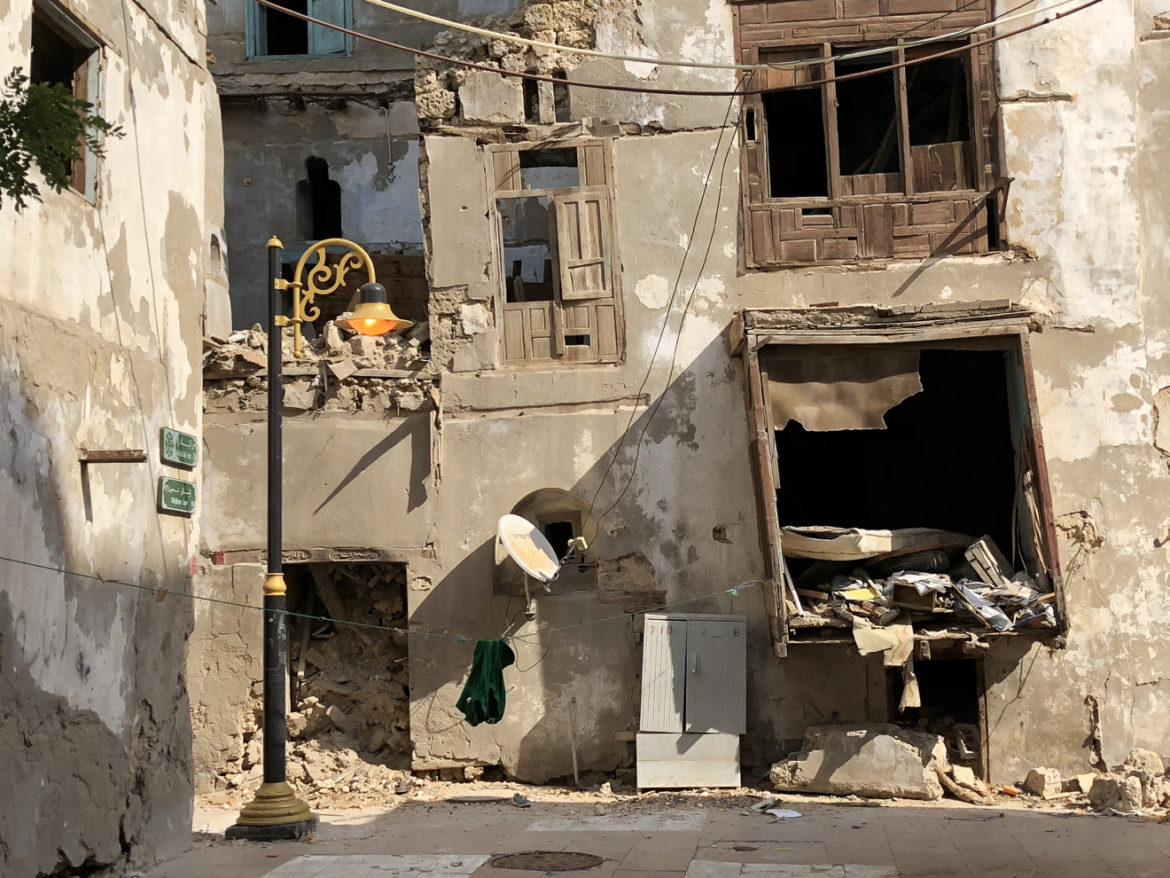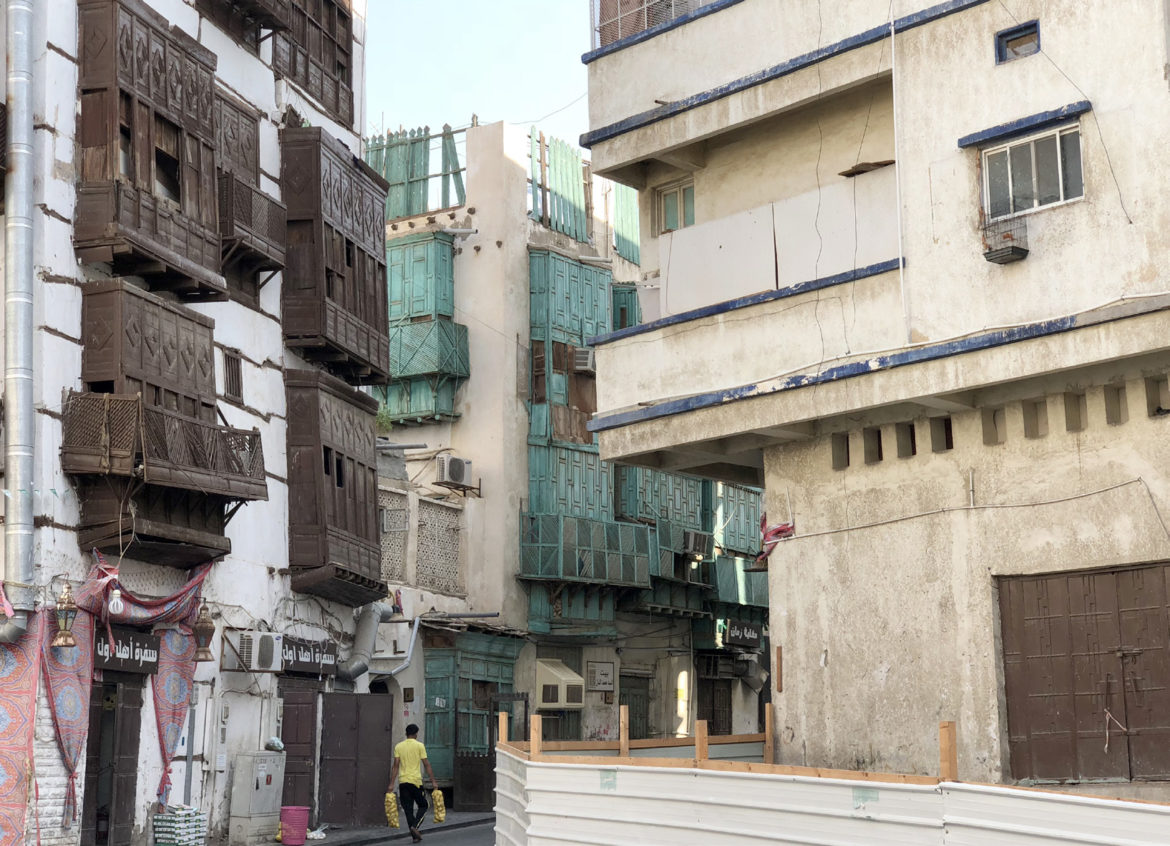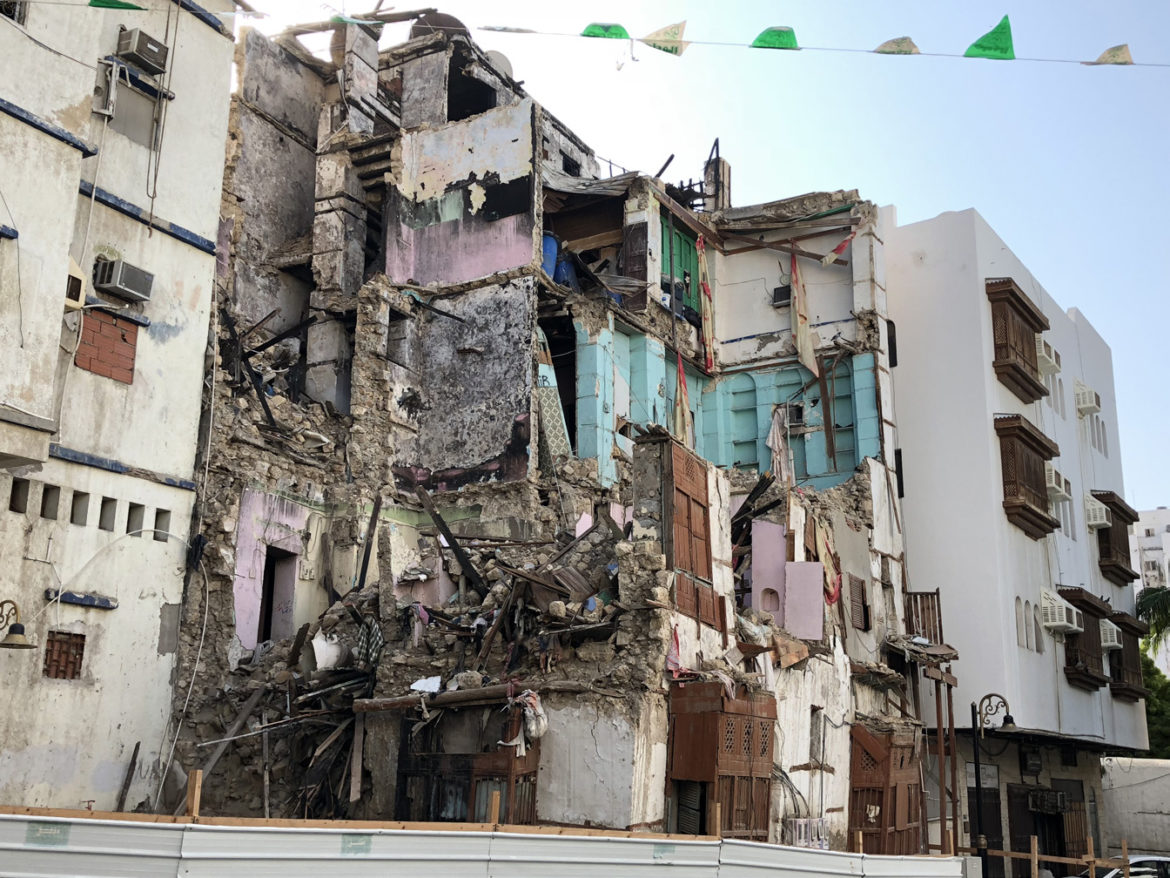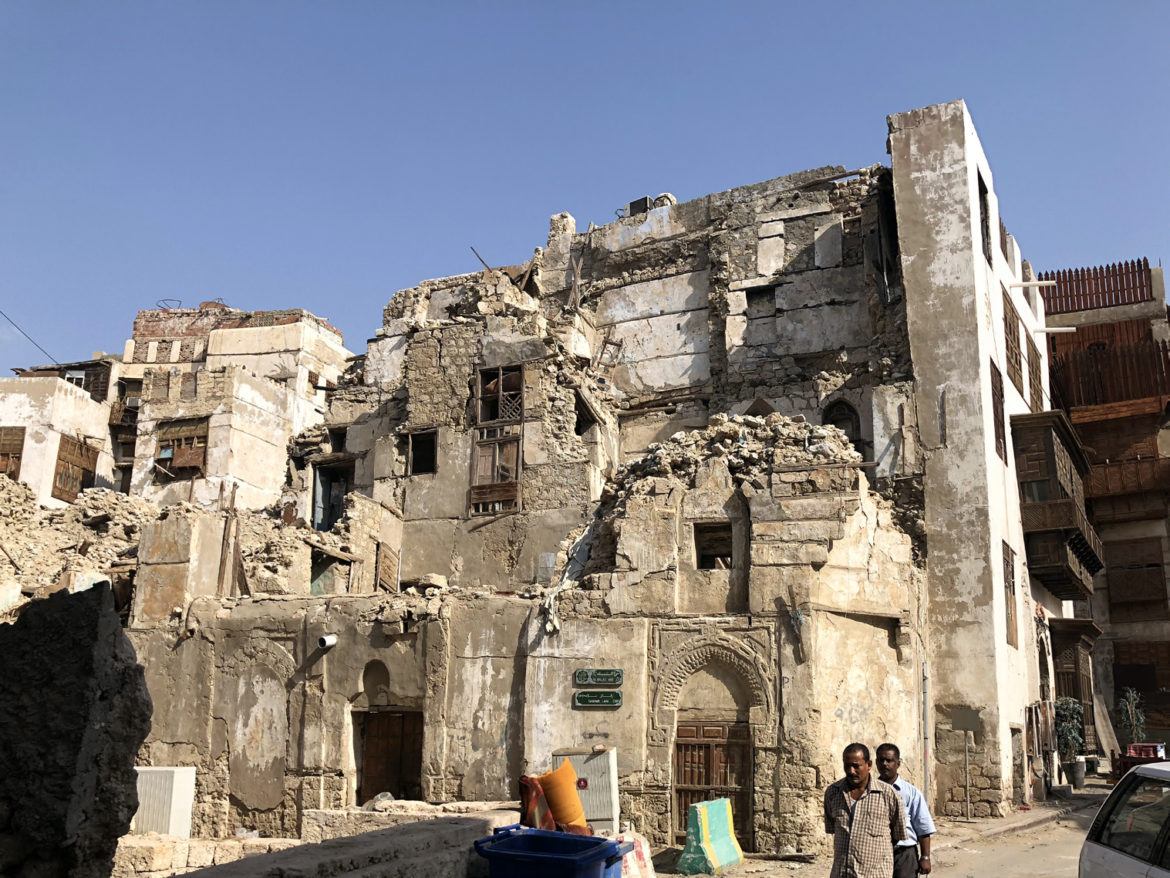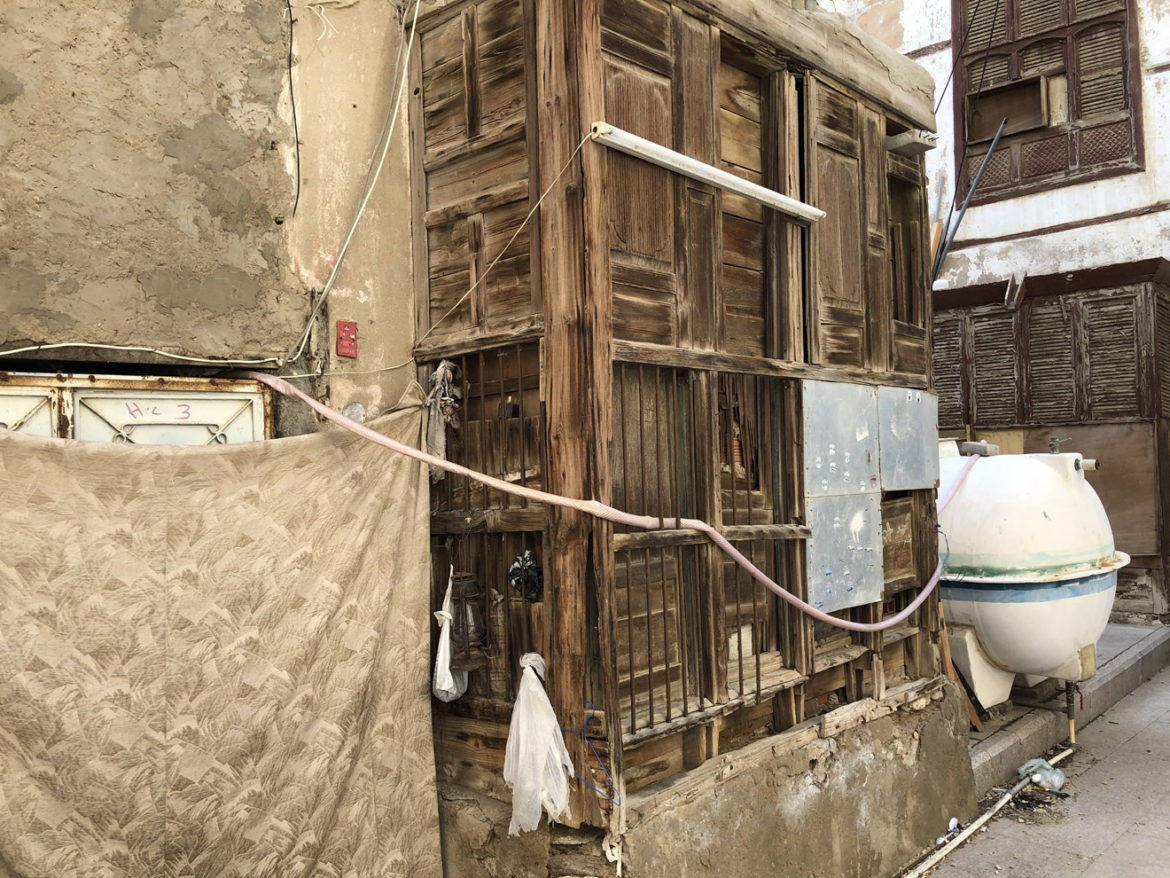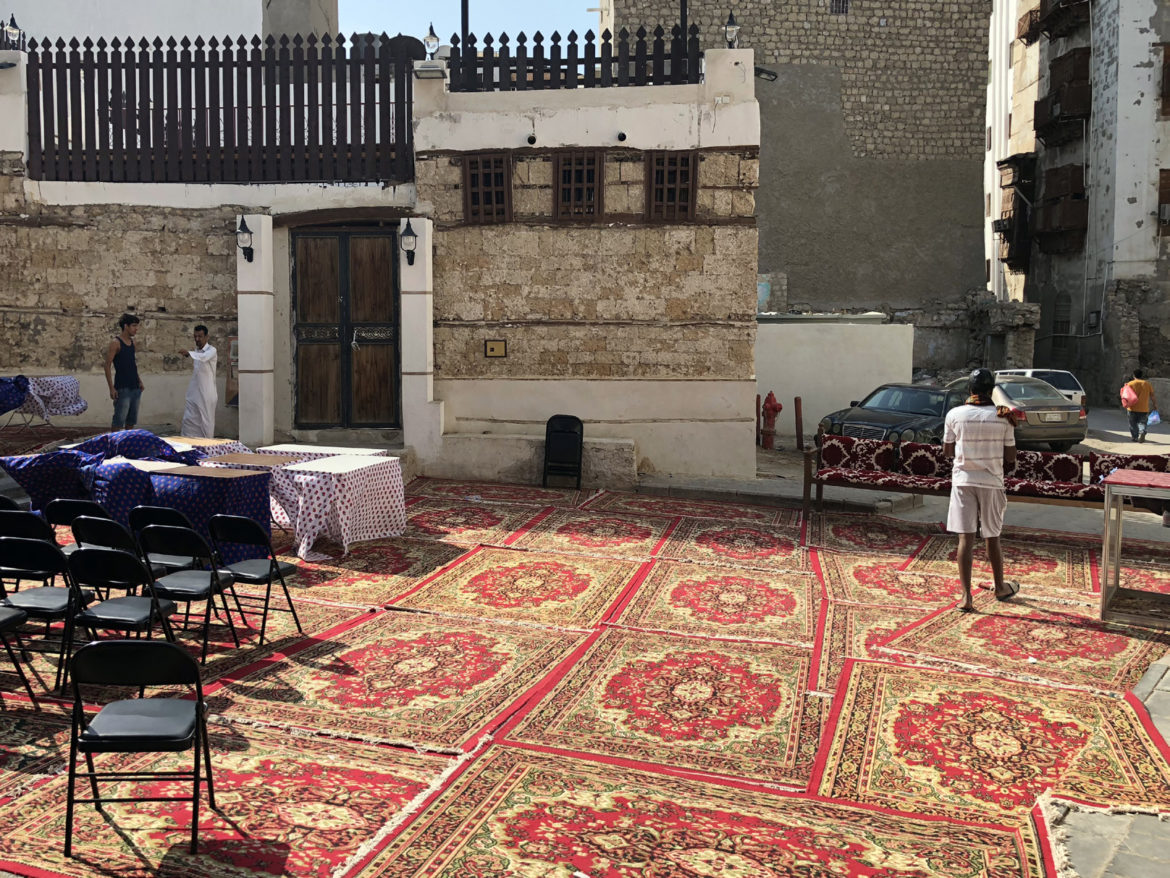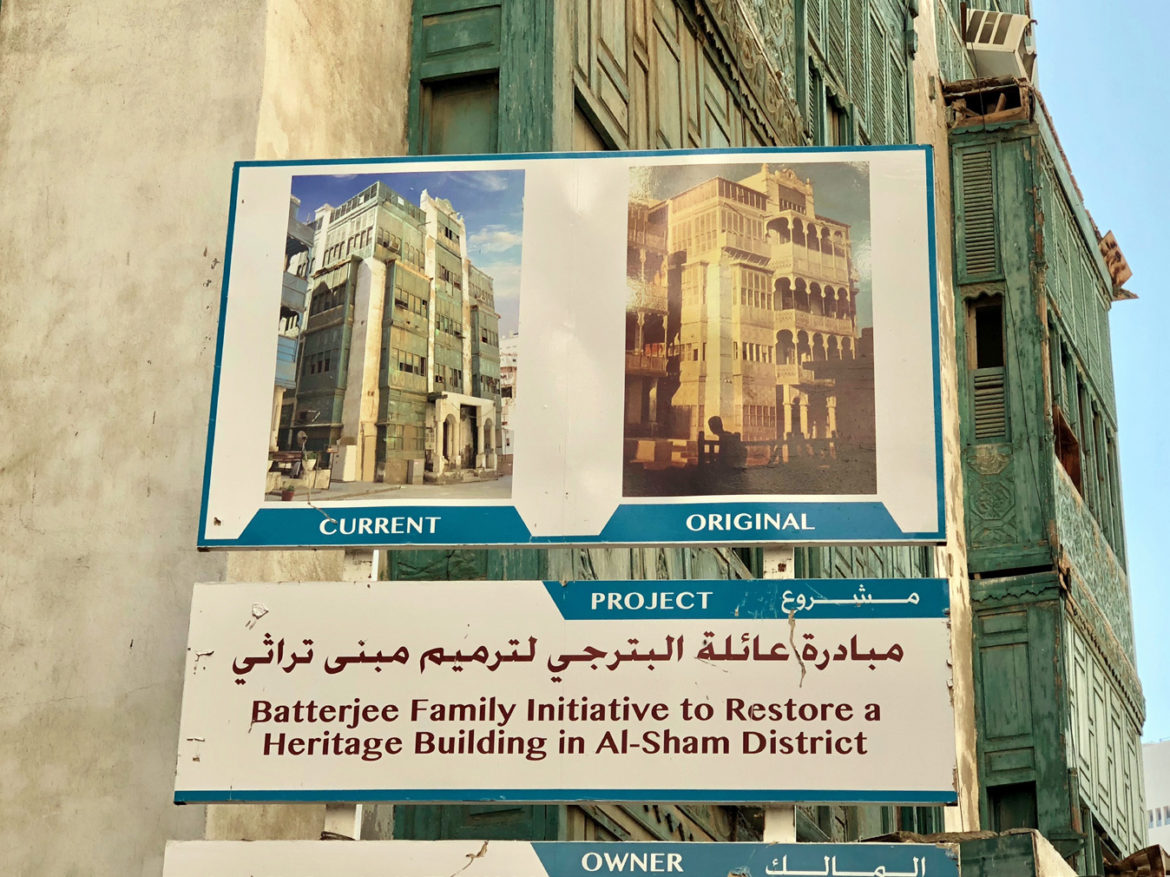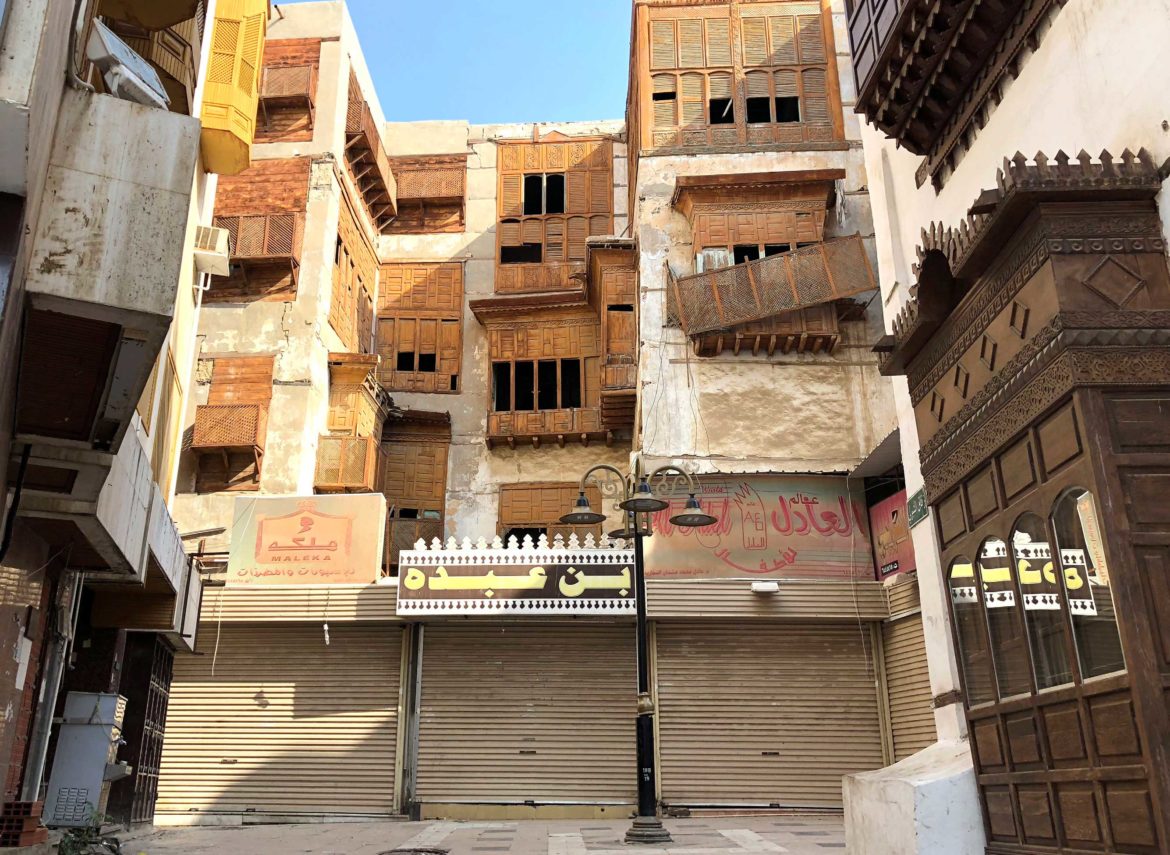This snapshot essay was a contribution to Spaces in Between, the publication accompanying the Saudi Arabian pavilion at the 2018 Venice Architecture Biennale.
A decade ago, before my first visit to Saudi Arabia, word traveled that customs officers used ballpoint pens to puncture the lenses of visitors’ cell phone cameras. Things have changed. Cameras are allowed. Today my phone captures an image with ten million more pixels than it did then.
Al-Balad is the name given to the old center of Jeddah. Its buildings shelter stories in a thick cloak of decay. When I visit again, a decade since first time, Al-Balad hunkers closer to the ground, the way sediment compresses into the earth’s layers. When a building is abandoned, its atoms start to ache for a previous – some call it natural – state. If humans don’t find a use for these structures, other forces will.
When I first took snapshots of Jeddah in 2008, a police officer stopped me and asked, What for? Without getting out of his car, he swiped through the images. Muhandis, I said, the closest I could get to saying architect. The architect is deemed by most people anywhere as hapless, harmless and with a head stuck in the details, not the larger picture. He gave me back my phone with a look of boredom.
Today, Al-Balad reacts with indifference to my phone camera and to me. Tourists, whether or not they are architects, are attracted to ruins: Rome, Naples, Tripoli (both of them), Detroit. Al-Balad fits this bill. Gazers come for the decay. I feel dubious taking snapshots. It’s the details, I tell myself, not the larger picture.
In Al-Balad it can be difficult to discern empty shells from inhabited buildings. One might seem abandoned and threateningly slanted, only to have its stature resuscitated by a man who enters it with a crate of groceries. He has enough lemons to last a family a week.
The architect Suad Amiry, whose life work reveals the power that preservation can wield, once told me that the lack of development makes it easier to preserve buildings. Development offers too many more lucrative options. Of course, there is no such thing as an absolute lack of development. Even when there is no apparent campaign of transformation, there can still be much movement going on. We just don’t label it progress. In Al-Balad, every disintegrating building has a frustrated economic plan behind it, the hopes of a regenerated property market before it.
If no one brings change to Al-Balad, then time will. Time does not stand still in Al-Balad. Time is a powerful and cruel force. It is insidious. But its long-game doesn’t just round edges and inscribe cracks into architectural carcasses; it can leave a building physically assaulted. It can wield the force of a hurricane or a tank, just over a longer duration. Time makes a building cast off its walls so that they cascade down like a mudslide.
Al-Balad’s decay happens in isolation. Encapsulated here is the story of Jeddah’s cosmopolitanism. A story so rich, so incomparable to any other city’s. Al-Balad’s cordoned-off decay is proof that cosmopolitanism was redefined and displaced to somewhere else; To new neighborhoods, even to new cities. There are Jeddawis who want a return to Al-Balad. Most residents I have met claim a deep history that connects them to the city and then to other places far beyond. Like Jeddah, Al-Balad claims resplendent provenances.
Al-Balad seems inhabited mostly by South Asians. Historically they had come for the Hajj and never left, but that story has faded to other ones of migration. A preservation campaign would render the death of the district that they today inhabit. For now a tourniquet of slow-moving traffic on ring roads separates Al-Balad from the rest of the city. Al-Balad is for the people with no or fewer options. Isolation is another means of preservation. The traveler interlopes, encased in the residents’ indifference.
Preservation breathes death because it takes away time. There is no future, no past, just one arbitrarily chosen moment that never existed anyway. It brings another kind of death – architectural formaldehyde. Preservation’s surfaces are swollen by everything they have to hide inside them.
In Al-Balad, rubble and rough edges can be blanketed over with unassuming layers. Dust isn’t swept under the carpet; the rug is swept over the dust. There is evidence that people find a way, not to make Al-Balad beautiful but to make it work: human-scale, liveable, sustainable. It is never the “celebration of the mashrabiya,” but the effort to determine how space encounters time.
A sign in front of one old mansion promises that the structure is being restored. The sign features a photograph of the building in its current state, not unlike what can be observed behind. That image is paired with another, labeled original. The latter is a reproduction of a painting, one that employs a color palette, composition and lighting that betray it as Orientalist. Such Orientalist paintings embraced the picturesque. The picturesque is a proclamation of timelessness. Timelessness is death. How appropriate, then, that the picturesque guides this effort of preservation. The painting was a reconstruction from what the artist saw, and now the building is a reconstruction from a past that never existed, that never reckoned with time.
